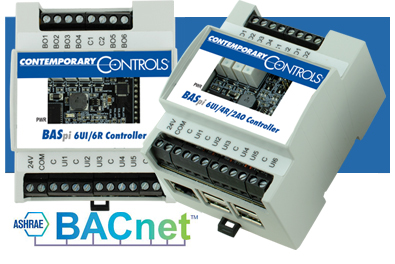Control Network Newsletter

BASpi-Edge Web Components
 Sedona is an open-source software environment designed to make it easy to build smart, networked, embedded devices which are well suited for implementing control applications. The Sedona language facilitates component-oriented programming where components are assembled onto a wire sheet, configured, and interconnected to create applications. Sedona was made available to the public under an Academic Free License (AFL 3.0) granted by the licensor—Tridium, Inc. A licensee is allowed worldwide, royalty-free, and non-exclusive use of the technology.
Sedona is an open-source software environment designed to make it easy to build smart, networked, embedded devices which are well suited for implementing control applications. The Sedona language facilitates component-oriented programming where components are assembled onto a wire sheet, configured, and interconnected to create applications. Sedona was made available to the public under an Academic Free License (AFL 3.0) granted by the licensor—Tridium, Inc. A licensee is allowed worldwide, royalty-free, and non-exclusive use of the technology.
BASpi-Edge, the most versatile Edge Controller in the market, utilizes Contemporary Controls' Sedona Application Editor for programming. Sedona Components are assembled onto a wire sheet, configured, and then interconnected with other components to create applications. Web Components provide a means of interacting with the Sedona wire sheet via a web browser versus using a Sedona tool.
In addition to developing custom Sedona components, Contemporary Controls has developed a Java-based Sedona tool called the Sedona Application Editor (SAE). BASbackup, a BAScontrol Project utility is available that not only archives Sedona application programs but controller configurations as well, thereby creating a complete project backup. The Sedona technology is portable to other platforms and Contemporary Controls has developed the BASemulator that mimics a real controller on a Windows PC. The BASemulator, SAE and BASbackup comprise the BAScontrol Toolset which is available for free after registering with Contemporary Controls.
The BASpi-Edge supports up to 48 web components (WC01 – WC48). These components provide a means of interacting with the Sedona wire sheet via a web browser versus using a Sedona tool. These are custom components developed by Contemporary Controls which are provided in the CControls_BASC22_Web kit. Configuring web components is accomplished using a Sedona tool by first setting the target component as an input or output (integer, float or Boolean). In addition, high and low limits can be entered for wire sheet inputs. Returning to the web pages, for every web component (WC), a description and value can be entered. The description field is only used as an aid to the systems integrator in understanding the function of the component. If the component is configured as a wire sheet input, the assigned limits will restrict the range of the variable's entry. This eliminates the need to add limit logic on the wire sheet. For wire sheet outputs, limits are ignored and not displayed.
Web Components are not served over BACnet or used in graphical Dashboards or the Cloud, but they provide a means to write or read data to and from the Sedona wire sheet directly from the BASpi-Edge web page. These components can be used for altering Sedona wire sheet control parameters (such as setpoints), monitoring of wire sheet logic states, or adjusting logic sequence for variation in control applications. Web components are ideal for simplified control logic configuration.
The ability to set web components is just one feature of the BASpi-Edge. It also features a 24 VAC/VDC power input, resilient pSLC 8 GB micro SD card, BACnet client/server communication over Ethernet or Wi-Fi, and Sedona function block programming. Data processing at the edge, web page configuration with quick and easy cloud connectivity to Azure IoT Central (SaaS) cloud solutions – all these features make BASpi-Edge a versatile controller suitable for a wide array of applications.
Two models are available. While both models have six universal inputs, one model has six relay outputs, and the other four plus two 0-10 VDC analog outputs. Visit the BASpi-Edge product page to learn more.